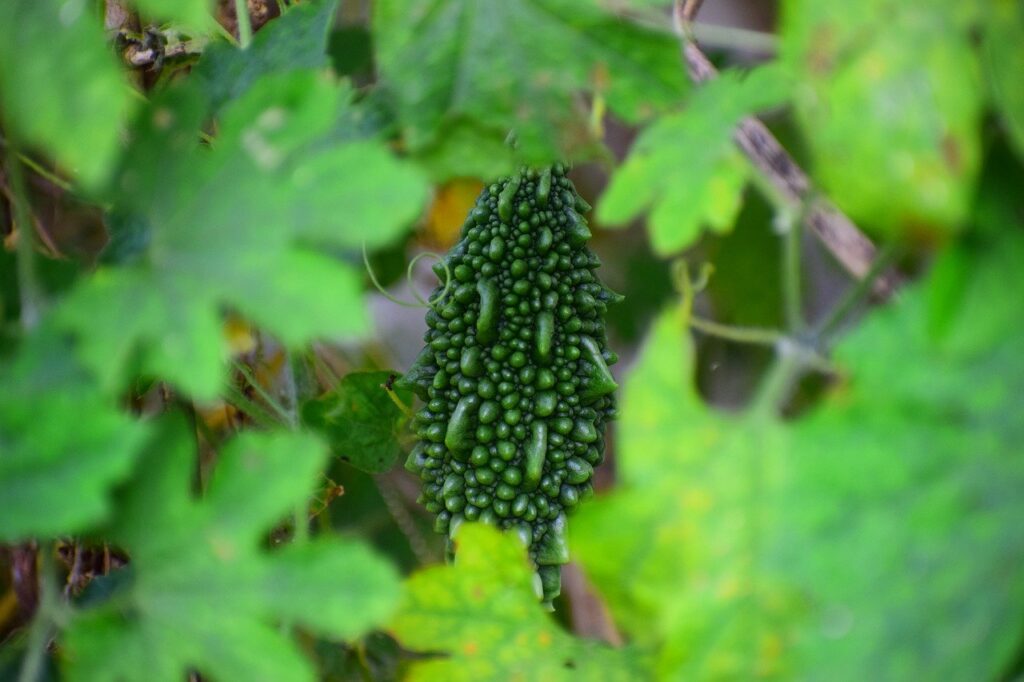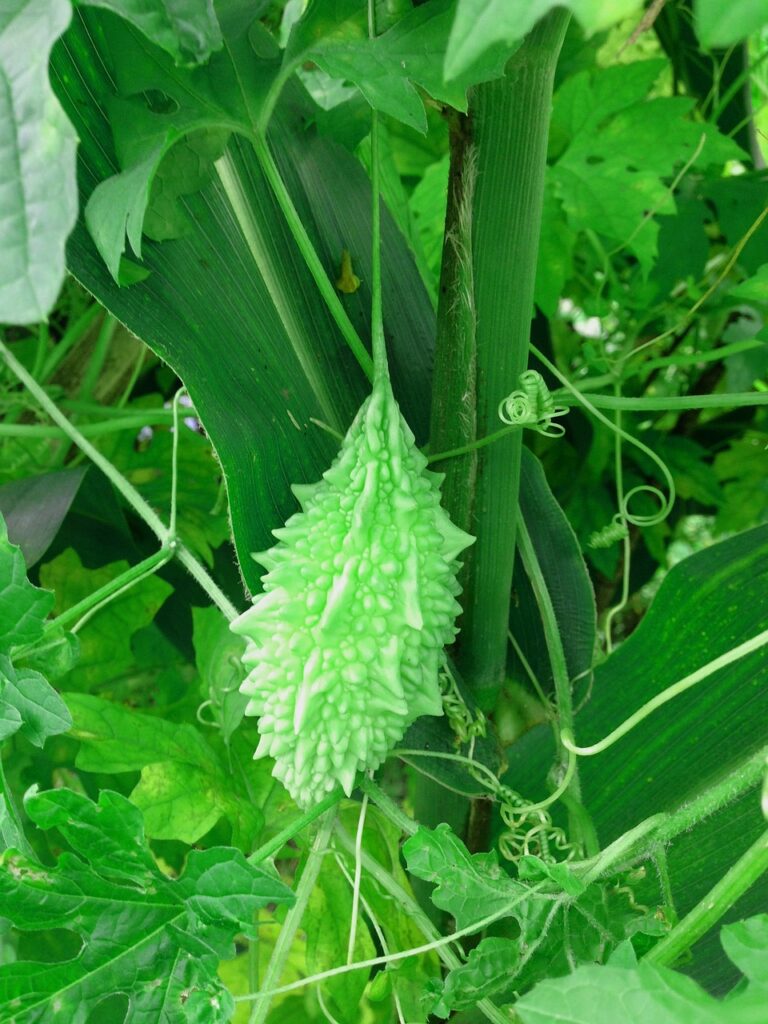
Discover effective tips for growing and harvesting bitter melon in your garden with this comprehensive cultivation guide.
Introduction: Welcome to the world of bitter melon cultivation! Known for its distinct flavor and numerous health benefits, bitter melon is a popular vegetable in many cuisines around the world. In this comprehensive guide, we'll explore the essential techniques and strategies for growing and harvesting bitter melon in your garden, ensuring a bountiful harvest of this delicious and nutritious produce.

Learn how to cultivate healthy bitter melon plants and harvest flavorful fruits for culinary use. Bitter Melon is one of the most popular vegetables in the world. Although bitter in taste, it is known as a favorite vegetable of all. 100 grams of edible bitter gourd contains 1.5-2.0 mg of fiber, 20-23 mg of calcium, 1.8-2.0 mg of iron and 88.96 mg of dietary C. Bitter gourd grows well in warm and humid climates. Excessive rainfall can disrupt pollination. Bitter gourd can be cultivated in all types of soil. Grows best in loamy sandy loam soils rich in organic matter.
Before diving into the cultivation process, let's cover the basics to ensure successful bitter melon cultivation:
Choose high-quality bitter melon seeds from a reputable supplier or source. Opt for disease-resistant varieties suited to your climate and growing conditions for optimal results.
Prepare well-draining, nutrient-rich soil for planting bitter melon seeds. Amend the soil with organic matter such as compost or aged manure to improve fertility and soil structure. Uchche and bitter gourd seeds can be sown directly on mat (40x40x40 cm). At least 2 seeds should be sown per field or 15-20 days old seedlings produced in polybags should be planted in this area. 1.0 m in row for Uchcha and 1.5 m for bitter gourd. If you want to sow seeds or plant saplings, at least 10 days before you need to prepare the seeds by applying the prescribed fertilizer.
Now that you've prepared the soil, it's time to plant and care for your bitter melon plants:
Plant bitter melon seeds or seedlings in well-prepared soil at a depth of 1 inch. Space plants approximately 12 to 18 inches apart to allow for proper growth and air circulation.
Keep the soil consistently moist but not waterlogged throughout the growing season. Water deeply and regularly, especially during hot and dry periods, to promote healthy growth and fruit development.
Bitter melon plants are susceptible to various pests and diseases, so it's essential to implement effective management strategies:
Regularly inspect your bitter melon plants for signs of pest infestation, including aphids, whiteflies, and fruit flies. Identify pests early to take timely action and prevent damage to your plants.
Utilize natural pest control methods such as neem oil spray, insecticidal soap, or companion planting with pest-repelling herbs to manage common pests without resorting to synthetic chemicals.
Knowing when and how to harvest bitter melon is crucial for preserving flavor and quality:
Harvest bitter melon fruits when they reach maturity but are still firm and green in color. Avoid waiting too long, as overripe fruits can become excessively bitter and less palatable.
Store harvested bitter melon fruits in a cool, dry place away from direct sunlight. Use them promptly for the freshest flavor, or store them in the refrigerator for up to a week.

A1: Bitter melon's adaptability to containers stems from its ability to thrive with sufficient space, sunlight, and support for climbing vines. Opt for compact or dwarf varieties for optimal results.
A2: Bitter melon plants typically yield fruit within 60 to 70 days after planting, although variations may occur based on factors such as growing conditions and the specific plant variety.
A3: Bitter melon plants are sensitive to frost and prefer warmer climates. To safeguard them, plant after the last frost date, and consider providing protection or moving them indoors if frost is anticipated.
A4: Absolutely! Bitter melon vines can be artfully trained to grow vertically using trellises or support structures. This not only maximizes space but also enhances air circulation and promotes optimal fruit development.
A5: Bitter melon is a nutritional powerhouse, rich in vitamins, minerals, and antioxidants. Its potential health benefits include aiding in blood sugar regulation and providing immune support, making it a valuable addition to your diet.
A6: To enhance flavor, ensure your bitter melons receive ample sunlight, well-draining soil, and appropriate watering. Harvest when they are firm and have a vibrant color, typically avoiding overripening.
A7: While bitter melon thrives outdoors, you can cultivate it indoors with proper care. Ensure sufficient sunlight, use well-draining soil, and consider providing support for the climbing vines.
A8: Beginner-friendly varieties of bitter melon, such as compact or dwarf types, are advisable for those new to gardening. These varieties often require less space and are more forgiving to cultivation mistakes.
A9: Bitter melon adds a unique flavor to various dishes. Incorporate it into stir-fries, soups, or salads. Experimenting with different cooking methods can help balance its distinctive taste.
A10: Bitter melon plants may face challenges like aphids or powdery mildew. Regularly inspect your plants, and consider organic pest control methods, such as neem oil, to keep them healthy and thriving.
After 45-45 days of seedling growth, Uchher tree begins to bear fruit. It takes about 2 months to ripen. Fruits are ready to eat within 15-20 days after pollination of female flowers. Once the fruit collection starts, it continues for two months. With improved cultivation methods, the yield per hectare of Uchche and Corolla is 7-10 tons (30-40 kg/percent) and 20-25 tons (80-100 kg/percent) respectively.
Cultivating bitter melon in your garden is a rewarding experience that offers delicious and nutritious rewards. By following the tips and techniques outlined in this guide, you can grow healthy bitter melon plants and enjoy a bountiful harvest of this unique vegetable. Start your bitter melon garden today and savor the flavors of this versatile and beneficial produce!
Note : If you want to know and ask more questions about agriculture, you can contact here

Copyright 2024 Farming Solutions